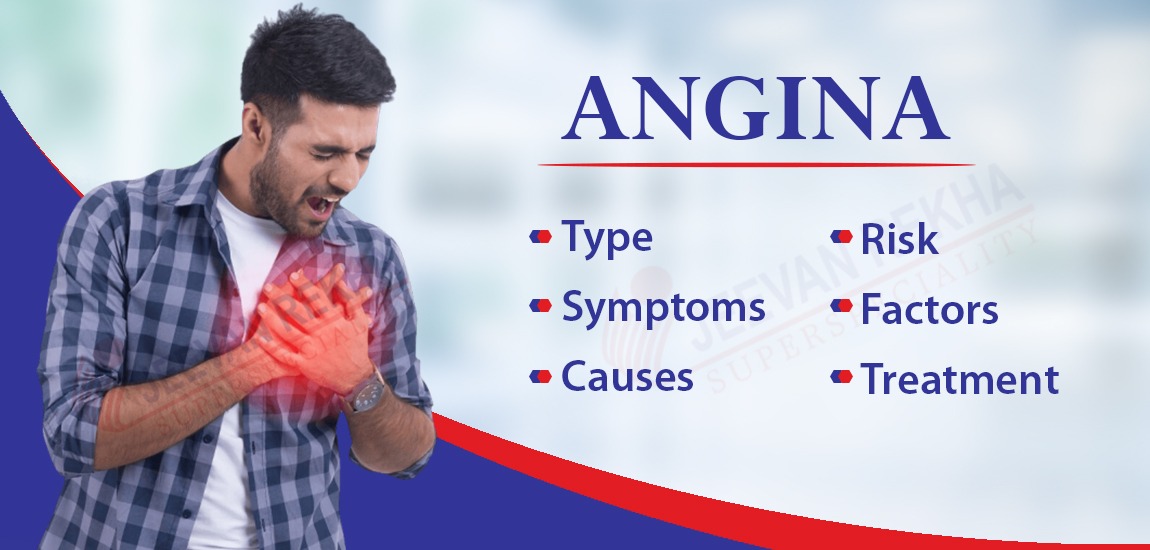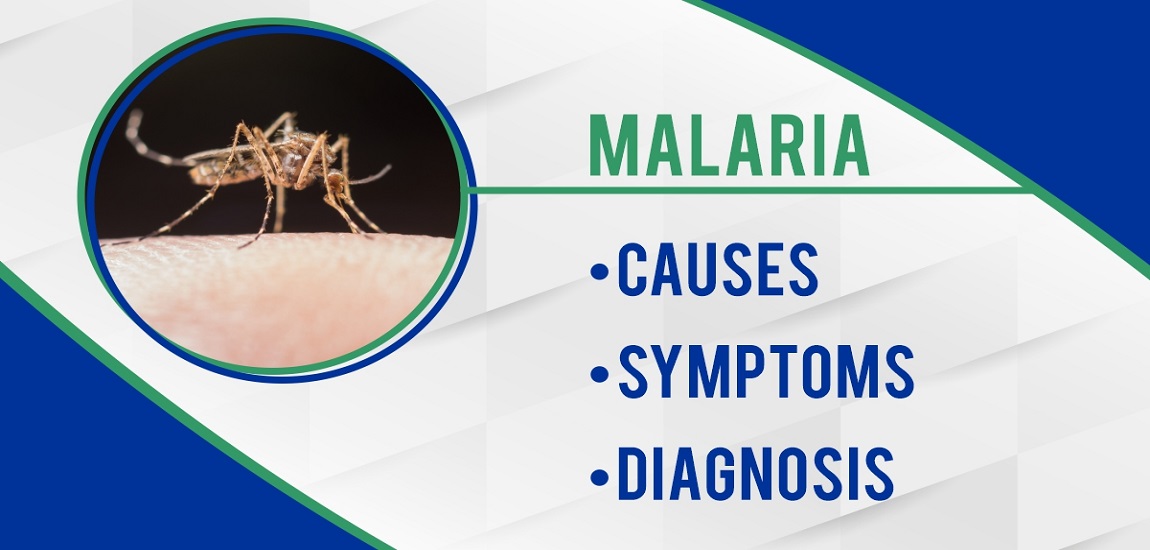
- By JRSH Admin
- In Health and Tips,
- Posted October 13, 2023
What is Angina: Types, Symptoms, Causes, Risk factors and Treatments
What is Angina?
Angina is chest pain caused by insufficient blood flow to a part of the heart. Your chest may feel squeezed or pressured, as if you are having a heart attack. Chest pain caused by ischemic heart disease is sometimes known as angina pectoris.
This is a sign of heart disease, and it occurs when your arteries get blocked or there isn't enough blood flow in the arteries.
The symptoms of angina usually disappear within a couple of days. However, it might indicate a potentially fatal heart condition. To prevent a heart attack, it is critical to understand what is happening and what you can do.
Angina is typically under control with medication and lifestyle modifications. Surgery might be required if it is more serious. As an alternative, you might require a stent, a tiny tube that holds open arteries.
Types of Angina
Angina is a type of chest pain or discomfort that occurs when there is insufficient blood flow to the heart muscle. Here are the types of angina:
- Stable Angina (Angina Pectoris): This is the most common type of angina. It occurs when the heart's demand for oxygen increases, such as during physical exertion or emotional stress. The pain is usually predictable and goes away with rest or medication.
- Unstable Angina: This is a more serious and unpredictable form of angina. It can occur at rest or with minimal exertion and is not relieved by rest or medication. Unstable angina is a medical emergency and can be a sign of an impending heart attack.
- Variant Angina (Prinzmetal's Angina): This type of angina is caused by a sudden spasm of the coronary arteries, which temporarily reduces blood flow to the heart. It can be severe and frequently happens while you are at rest. Unlike stable angina, it is not typically triggered by physical exertion or stress.
- Microvascular Angina (Cardiac Syndrome X): This type of angina involves dysfunction of the tiny blood vessels (microvessels) in the heart. It can cause chest pain, but it often occurs in people who do not have significant blockages in their major coronary arteries.
Also read: Asthma Wheezing: Meaning of Wheezing, Symptoms, Causes, and Treatment
Symptoms of Angina
The symptoms of angina can include:
- Chest pain or discomfort.
- Pain may radiate to the neck, jaw, shoulder, or arm (typically the left arm).
- Shortness of breath.
- Fatigue.
- Nausea.
- Sweating (diaphoresis).
These symptoms often occur during physical exertion, emotional stress, or in response to cold temperatures.
Causes of Angina
Angina is primarily caused by reduced blood flow to the heart muscle, typically due to underlying heart disease. The most common cause of angina is coronary artery disease (CAD), which occurs when the coronary arteries that supply blood to the heart become narrowed or blocked. The main causes and risk factors for angina include:
- Coronary Artery Disease (CAD): Atherosclerosis, the buildup of fatty deposits (plaques) in the coronary arteries, is the primary cause of CAD. These plaques narrow the arteries, reducing blood flow to the heart muscle.
- Spasms of Coronary Arteries: In some cases, angina can be triggered by the sudden, temporary contraction or spasm of a coronary artery. This condition is referred to as Prinzmetal's angina or variant angina.
- Blood Clots: A blood clot can partially or completely block a coronary artery, leading to reduced blood flow to the heart and causing angina.
- Artery Inflammation: Inflammation of the coronary arteries (such as in conditions like vasculitis) can reduce blood flow and cause angina.
- Emotional Stress: Emotional stress can lead to an increase in heart rate and blood pressure, which can trigger angina in individuals with CAD.
- Physical Exertion: Physical activities that increase the heart's demand for oxygen, such as exercise, can trigger angina in individuals with CAD.
- Smoking: Smoking is a major risk factor for CAD and can contribute to the development and progression of angina.
- High Blood Pressure (Hypertension): High blood pressure can strain the coronary arteries and increase the risk of angina.
- High Cholesterol: Elevated levels of LDL (low-density lipoprotein) cholesterol can lead to the formation of atherosclerotic plaques in the coronary arteries.
- Diabetes: Diabetes increases the risk of CAD and can contribute to the development of angina.
- Obesity: Being overweight or obese can increase the risk of CAD and angina.
- Family History: A family history of heart disease can predispose individuals to angina and CAD.
Also read: Phobias: Causes, Types, Symptoms & Treatment
Diagnosis of Angina
The diagnosis of angina typically involves a combination of medical history assessment, physical examination, and various diagnostic tests. Here's an overview of the common steps and tests used in the diagnosis of angina:
- Medical History and Physical Examination: The healthcare provider will start by taking a detailed medical history, including a discussion of your symptoms, risk factors, and family history of heart disease. They will also perform a physical examination, checking your vital signs, heart sounds, and any signs of heart-related issues.
- Electrocardiogram (ECG or EKG): An ECG is a painless test that records the electrical activity of your heart. It can help identify abnormal heart rhythms and patterns that may suggest angina or underlying heart disease.
- Stress Test (Exercise ECG or Stress Echocardiogram): A stress test involves exercising on a treadmill or stationary bike while continuously monitoring your ECG and blood pressure. This test is useful for evaluating how your heart responds to physical activity and may reveal exercise-induced angina.
- Echocardiogram: This test uses sound waves (ultrasound) to create images of your heart. It can help assess the heart's pumping function, the movement of the heart's valves, and the presence of any structural abnormalities.
- Coronary Angiography (Cardiac Catheterization): Coronary angiography is an invasive procedure that involves injecting a contrast dye into the coronary arteries. X-ray images are then taken to visualize the blood flow in the coronary arteries and identify any blockages or narrowing.
- CT Angiography (CTA) or Coronary Computed Tomography Angiography (CCTA): This non-invasive imaging test uses a CT scanner to create detailed images of the coronary arteries, allowing for the detection of blockages or narrowing.
- Blood Tests: Blood tests can help assess various factors related to heart health, including cholesterol levels, cardiac enzymes, and markers of inflammation. Elevated levels of certain markers may indicate heart muscle damage.
Risk Factors of Angina
Common risk factors for angina include:
- Coronary Artery Disease (CAD): The primary risk factor, is that CAD leads to reduced blood flow to the heart.
- Smoking: Smoking increases the risk of plaque buildup in the coronary arteries.
- High Blood Pressure (Hypertension): High blood pressure strains the heart and arteries.
- High Cholesterol: Elevated LDL cholesterol contributes to plaque formation in arteries.
- Diabetes: Diabetes increases the risk of CAD and related complications.
- Obesity: Excess body weight can strain the heart and worsen risk factors.
- Family History: A family history of heart disease raises the risk.
- Age: Risk increases with age, particularly in older adults.
- Gender: Men are more susceptible, though risk equalizes after menopause in women.
- Physical Inactivity: A sedentary lifestyle contributes to heart disease risk.
Treatments of Angina
Treatment options for angina include:
1. Lifestyle Modifications: Adopt a heart-healthy diet, exercise regularly, quit smoking, manage stress, and maintain a healthy weight.
2. Medications:
- Nitroglycerin: Relieves angina symptoms by relaxing coronary arteries.
- Beta-Blockers: Lower blood pressure and heart rate.
- Calcium Channel Blockers: Relax blood vessels and enhance circulation.
- Statins: Lower cholesterol levels and reduce plaque buildup.
- Antiplatelet Medications: Prevent blood clots.
- ACE Inhibitors or ARBs: Treat high blood pressure and reduce strain on the heart.
3. Invasive Procedures:
- Angioplasty and Stent Placement: Opens blocked arteries.
- Coronary Artery Bypass Grafting (CABG): Creates new routes for blood flow.
- EECP: Non-invasive therapy to improve blood flow.
4. Medications for Symptom Relief: Long-acting nitroglycerin and ranolazine can help prevent angina episodes.
5. Cardiac Rehabilitation: Structured program to improve cardiovascular health.
6. Management of Underlying Conditions: Control high blood pressure, diabetes, and high cholesterol.
Complications of Angina
Complications of angina can include:
- Heart Attack (Myocardial Infarction): Severe or prolonged angina can lead to a heart attack, causing heart muscle damage.
- Arrhythmias: Angina may trigger abnormal heart rhythms, which can be life-threatening.
- Heart Failure: Repeated episodes of angina can weaken the heart over time, leading to heart failure.
- Sudden Cardiac Arrest: In some cases, severe angina can lead to sudden cardiac arrest, a life-threatening event.
- Reduced Quality of Life: Angina can limit physical activity and impact daily life.
Prevention of Angina
To prevent angina:
- Maintain a heart-healthy lifestyle.
- Manage underlying conditions: Control high blood pressure, diabetes, and high cholesterol.
- Take prescribed medications as directed.
- Attend regular check-ups with your healthcare provider.
- Avoid or limit alcohol consumption.
- Follow a doctor-recommended plan if you have a family history of heart disease or other risk factors.
- Know the signs of angina and seek prompt medical attention if symptoms occur.
Tags
Blog Search
Latest Posts
-
बर्ड फ्लू के लक्षण, कारण, उपचार और बचाव के उपाय जानें
December 04, 2025 -
Best Diet Plan for Menopause Weight Management
November 25, 2025 -
Pulmonary Fibrosis Treatment: Understanding Lung Scarring and Breathing Problems
November 21, 2025 -
Arrhythmia: Types, Causes, Symptoms, and Treatment
November 07, 2025 -
Silent Heart Attack: Causes, Symptoms and Treatment
October 24, 2025




